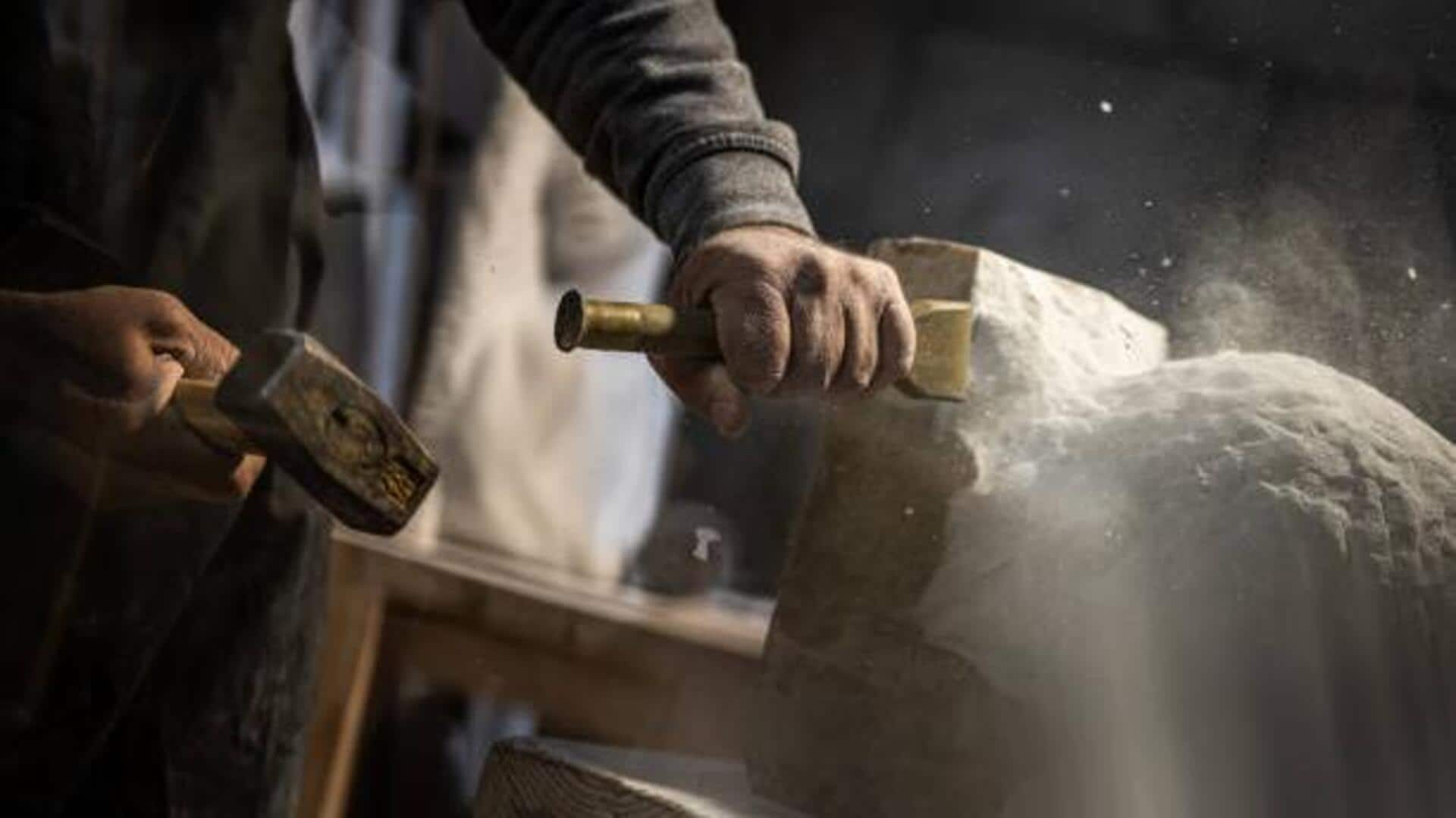
Interested in stone carving? Here's how to get started
What's the story
Stone carving is a deeply rooted artistic tradition across Africa, renowned for its intricate designs and profound cultural narratives.
Becoming proficient in this craft necessitates a comprehensive understanding of the materials, tools, techniques, and motivations intrinsic to African stone sculptures.
This article serves to advise enthusiasts on how to professionally and respectfully pursue their passion for African-inspired stone carving, while honoring its rich cultural legacy.
Choosing material
Select the right stone
The first step in stone carving is choosing the right stone. In Africa, soapstone is used due to its softness, which makes it easy to carve.
You need to choose a stone with a uniform texture and without cracks or veins, which can cause the stone to break during carving.
You can buy good-quality soapstone from local quarries or suppliers who specialize in selling this type of stone.
Tool kit
Gather essential tools
A well-equipped toolbox is essential for any stone carver.
Key tools include a variety of chisels, hammers, rasps, files, and sandpaper for shaping and smoothing.
For African-inspired carvings, which often involve intricate detailing and texturing, additional tools like diamond-tipped chisels can be invaluable.
Investing in quality tools not only streamlines the carving process but also allows for greater precision and detail in your work.
Honing skills
Learn traditional techniques
Learning authentic traditional African carving techniques is key.
Many African sculptors use a subtractive method, starting with a large stone block and chiseling away material to uncover the form.
To define shapes before refining details, they often use the "pointing" technique.
Workshops or online tutorials taught by experienced African artists are great resources to learn these techniques.
Cultural exploration
Find inspiration in African art
African art is vast, encompassing countless regions and cultures, each with its own distinct style and thematic richness.
Delve into this world by studying sculptures from traditions such as the Shona of Zimbabwe or the Akan of Ghana.
Use museums, art books, and online galleries as your sources of inspiration. Understand the symbolism behind traditional designs.
Skill development
Practice regularly
Like any art form, mastering stone carving takes time and consistent practice.
Begin with simple projects to familiarize yourself with your tools and materials. Then, gradually move on to more intricate designs inspired by your studies in African craftsmanship.
By committing to a regular practice schedule (say, a few hours every weekend), you'll steadily improve and eventually create pieces you're truly proud of.